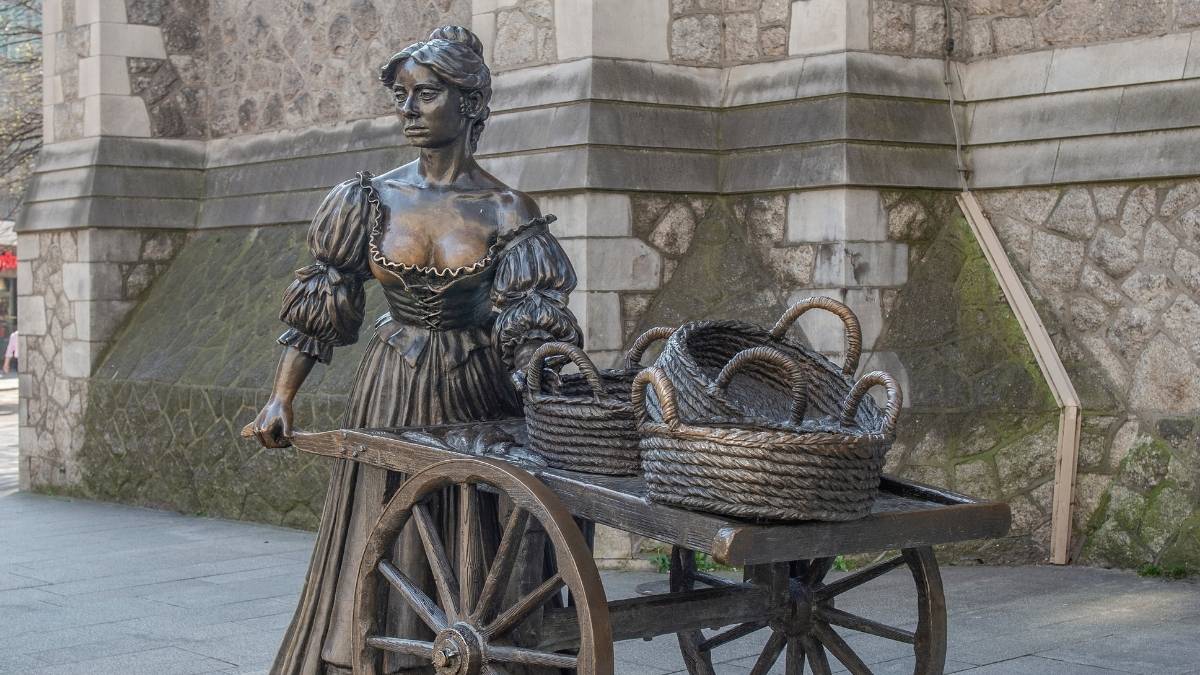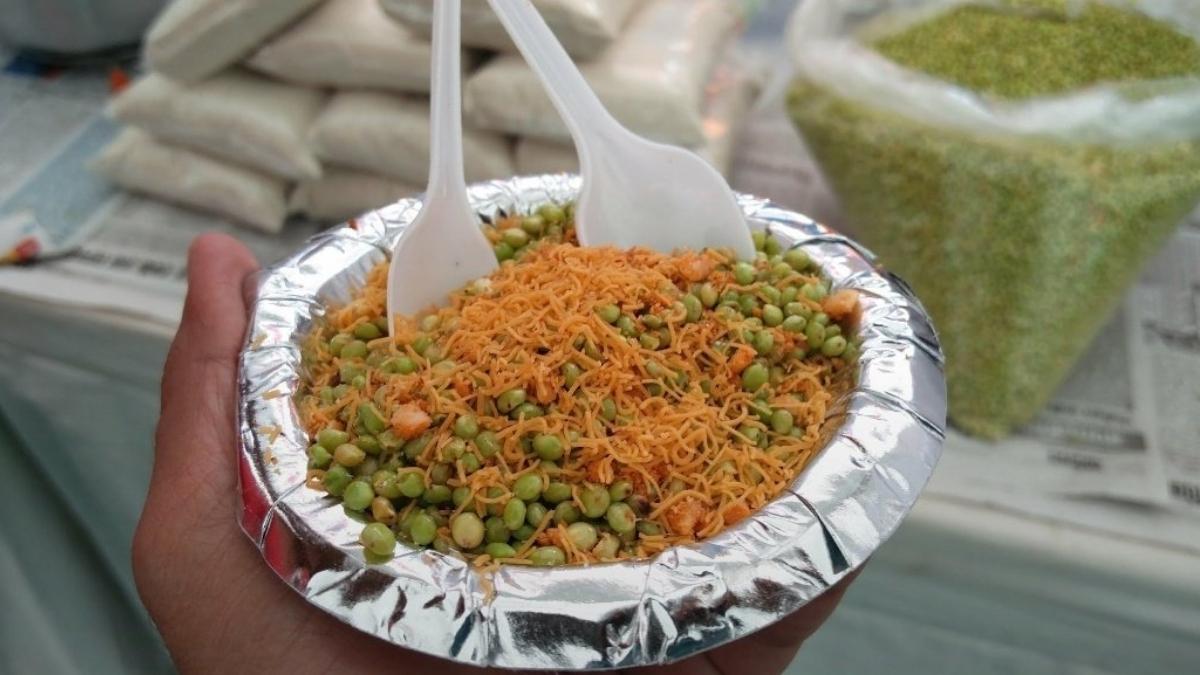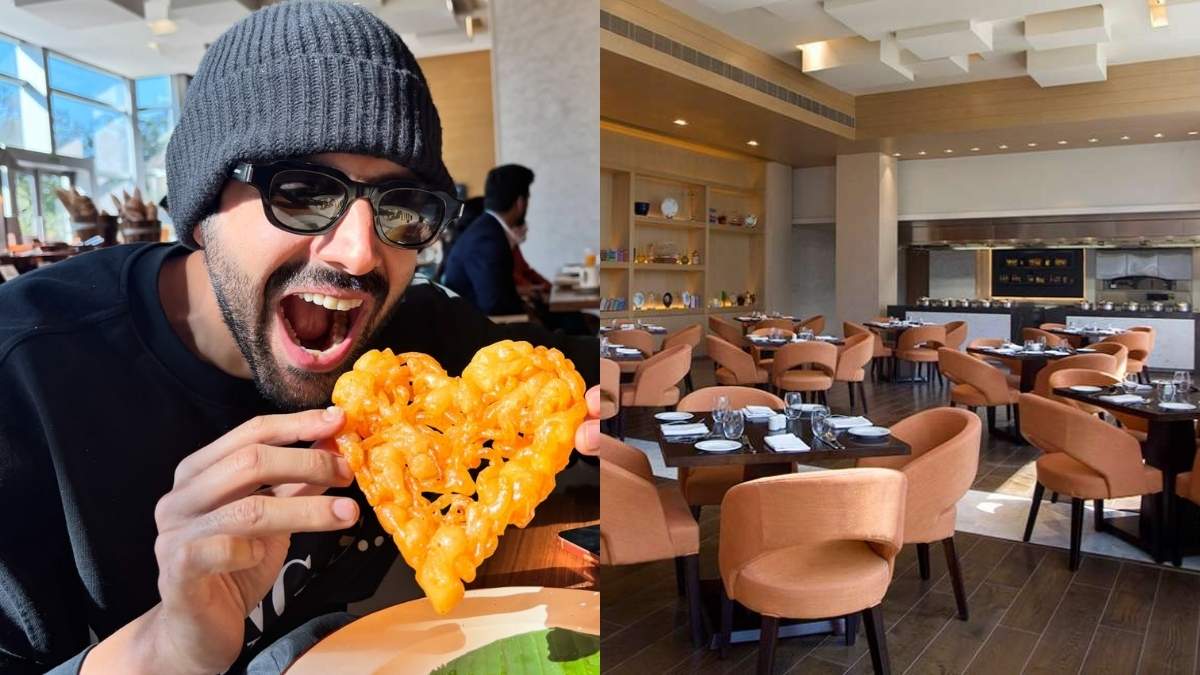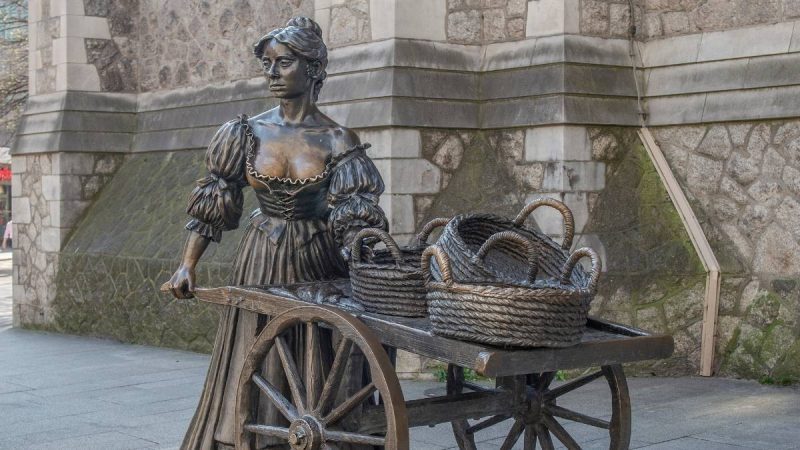In the heart of Dublin, on Suffolk Street, stands the bronze figure of Molly Malone, her weathered hands gripping a cart laden with cockles and mussels. Created by Jeanne Rynhart for the 1988 Dublin Millennium celebrations, this statue commemorates a figure who straddles the boundary between history and folklore.
Molly Malone, The Most Groped Statue In Ireland
View this post on Instagram
What strikes visitors most about this sculpture is not merely its artistic merit but the marked discolouration on certain parts of her figure – most notably her chest. This bronze patina tells a troubling story of a problematic tradition that has emerged over the years: the repeated groping of the statue by tourists seeking “good luck”.
The statue’s breasts bear visible evidence of this unwelcome attention, worn smooth and differently coloured from the rest of the bronze. The contrast is stark – and disturbing. Molly’s face, crafted with a sorrowful, vacant expression, seems to silently protest this indignity, yet the practice persists.
In response to this inappropriate behaviour, the Dublin City Council has been forced to deploy stewards to patrol and protect the statue during peak tourist periods. These guardians of Dublin’s cultural heritage gently but firmly discourage visitors from continuing this disrespectful practice.
Who Is The Lady Immortalised As A Statue?
The idea is to explain that what some dismiss as harmless fun actually diminishes both the artwork and the complex figure it represents. The irony is profound. The statue depicts a working-class woman who struggled and failed to survive in harsh conditions.
Whether historical or legendary, even in death, her representation continues to suffer unwanted handling. Nicknamed “The Tart with the Cart,” among other crude monikers, the treatment of Molly’s statue reflects deeper issues regarding respect for women’s bodies and dignity, even in bronze form.
In 2018, the Marie Keating Foundation highlighted this disconnect by temporarily adding a lump to the statue’s breast for cancer awareness. The campaign poignantly noted that despite all the handling, few noticed this potentially life-saving detail.
Today, visitors are increasingly encouraged to appreciate Molly Malone’s cultural significance without physical contact – to see beyond the myths and recognise the dignity of the fishmonger immortalised in bronze, who deserves the same respect in statue form as any woman deserves in life.
Cover Image Credits: Wikimedia Commons
For more such snackable content, interesting discoveries and the latest updates on food, travel and experiences in your city, download the Curly Tales App. Download HERE.
First Published: April 02, 2025 3:19 PM




